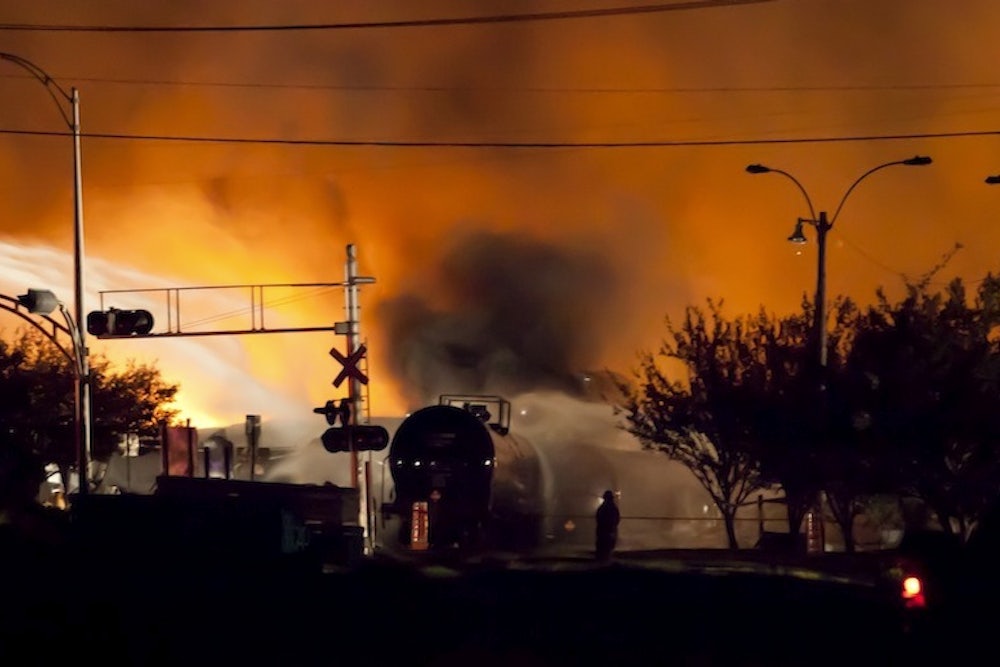The oil boom that has anointed the U.S. the top exporter in the world has led to an astounding increase in the amount of the flammable liquid being transported on the country's railways: The number of train cars moving crude oil in America has increased 4,500 percent since 2008.
But the quality of the trains themselves has not kept pace. The National Transportation Safety Board has long considered the most common model of car that carries North Dakota's shale oil to be “susceptible to damage and catastrophic loss of hazardous material." In 2013, 1.2 million gallons of oil spilled from train cars in the U.S.—more than every year since 1975 combined.

On Wednesday—almost a year since a train carrying oil from North Dakota exploded in Quebec, Canada, killing 47 people—the Department of Transportation took a step toward rectifying the problem with a set of proposed regulations that would require sturdier train cars, better braking, lower speed limits, and increased transparency from the industry.
The rules require that the improved brakes and walls be implemented by 2015. The DOT is phasing out the older tank car models within two years, unless they are retrofitted.
But environmental groups say two years is too long to wait. “If cars were exploding, GM wouldn’t get away with saying they should be taken off the road after two years,” Stephen Kretzmann, executive director of Oil Change International, said.
Until sturdier train cars are phased in, the rules also reduce the federal speed limit for high-hazard trains to 40 miles an hour. It’s unclear just what speed should be considered safe, especially after a train derailed a few months ago in Lynchburg, Virginia, when it was traveling at 24 m.p.h.
Even sturdier trains traveling at speeds of 30 m.p.h. may not be able to withstand punctures. “When you begin to look at cars that are derailing at speeds of 30, 40 miles an hour, it’s very difficult, it’s a big ask, to expect that a tank car get hit [and] not be breached,” Karl Alexy, staff director of the Federal Railroad Administration’s Office of Safety, said in the National Transportation Safety Board's April forum.
The DOT’s proposal, which is open for a 60-day comment period from the industry, also requires better labels on hazardous cargo and that the industry perform a risk assessment before choosing routes. Fred Millar, an independent rail safety consultant, said the rules for new tank cars and speed limits are “very weak.” He panned the Obama Administration for not requiring more transparency on the oil-train routes and the risks they pose to public safety and security.
Fearing tough new standards from regulators, the Association of American Railroads and American Petroleum Institute has protested in the weeks leading up to the rules that lower speed limits would be unnecessary and costly. Both trade associations agreed on phasing out older tank car models, but wanted a longer timeline of three years to comply.
